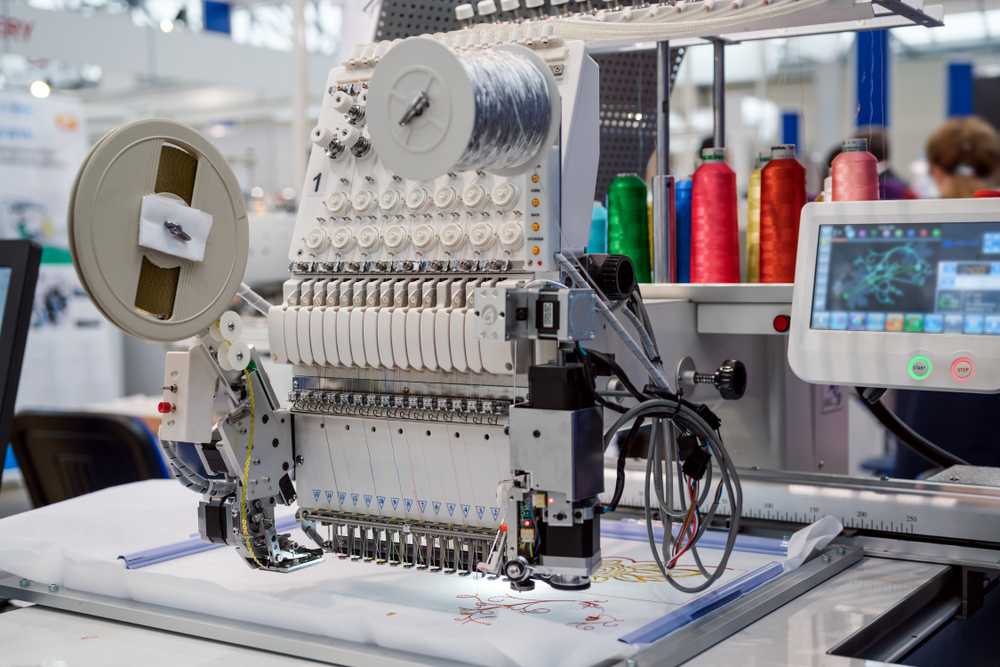Custom Digitizing for Embroidery: Tailored to Your Needs
Custom Digitizing for Embroidery: Tailored to Your Needs
Blog Article
Grasping the Embroidery Digitizing Refine: Your Ultimate Overview
Needlework digitizing is a careful craft that calls for accuracy and knowledge to equate complex layouts right into electronic formats for machine embroidery. As craftsmens get started on this trip to understand the needlework digitizing procedure, a comprehensive understanding of the fundamentals establishes the structure for excellence.

Understanding Embroidery Digitizing Fundamentals
Embroidery digitizing fundamentals develop the structure whereupon detailed layouts are translated into machine-readable formats for precise stitching. This preliminary action in the embroidery digitizing procedure is critical for guaranteeing that the final embroidered product is a faithful depiction of the initial layout. Comprehending embroidery digitizing basics involves grasping crucial concepts such as stitch kinds, sew direction, density, rug, and pull payment.
Stitch kinds play an essential duty in establishing the aesthetic and textural result of the embroidered design. By picking the proper stitch type, whether it be satin, fill, or running stitch, digitizers can achieve the desired effect and boost the total quality of the needlework. In addition, stitch direction affects the circulation and dimension of the layout, while thickness figures out the spacing and protection of the stitches.
Additionally, rug stitching gives stability to the design by safeguarding the material and avoiding distortion during the needlework process. Draw payment is one more vital consideration to combat the all-natural tendency of fabric to contract when stitched. Understanding these embroidery digitizing essentials is essential for developing professional-quality embroidered items.
Choosing the Right Digitizing Software Application
Picking the proper digitizing software application is a critical decision that dramatically impacts the effectiveness and top quality of the embroidery digitizing process. Digitizing for Embroidery. When selecting the ideal digitizing software, it is vital to take into consideration factors such as the complexity of layouts you plan to develop, the user-friendliness of the software program, the level of client support used, and the compatibility with your needlework equipment
There are various digitizing software options available out there, varying from fundamental programs for novices to innovative software program for specialist digitizers. Some preferred selections consist of Wilcom EmbroideryStudio, Hatch Needlework Software Program, and PulseID. These software program plans use a vast array of devices and functions to help you create intricate designs easily.
Prior to making a choice, it is suggested to discover the various software application choices through free tests or trials to figure out which one finest fits your requirements. Furthermore, reading reviews and looking for suggestions from skilled digitizers can provide valuable understandings into the strengths and weak points of each software (Digitizing for Embroidery). By carefully reviewing your requirements and comparing the features of different digitizing software, you can make an informed selection that improves your needlework digitizing process
Digitizing Tools and Strategies

Optimizing Style Setup for Needlework
Understanding the ins and outs of design setups is basic in accomplishing optimum results in the needlework digitizing process, structure upon the structure laid by comprehending digitizing devices and techniques. When enhancing design settings for needlework, it is important to take into consideration elements such as stitch kind, thickness, padding, pull payment, and enrollment. Registration settings straighten various elements of the style properly, maintaining general layout integrity.

Troubleshooting Common Digitizing Issues
When running into about his typical digitizing concerns during the needlework procedure, it is necessary to comprehend the source and implement efficient remedies quickly. One usual problem is stitch density concerns, where stitches might be too thick, creating the fabric to tighten, or as well thin, resulting in gaps in the design. Changing the stitch thickness setups in the digitizing software can assist settle this issue.
Another regular obstacle is string breaks during the embroidery process. This can happen as a result of various reasons such as inaccurate he has a good point stress setups, plain needles, or using low-quality thread. Making sure correct upkeep of the needlework machine, including routine needle modifications and stress modifications, can decrease the occurrence of thread breaks.
Additionally, style enrollment mistakes can cause misaligned components within the needlework layout. Examining the design alignment in the digitizing software and making necessary adjustments before stitching can help in avoiding this problem. By attending to these typical digitizing problems promptly and effectively, you can guarantee a smoother embroidery procedure and high-quality finished products.
Final Thought
Finally, understanding the needlework digitizing procedure requires a strong understanding of the basics, the right option of software program, and knowledge of devices and techniques. Enhancing layout setups and fixing common digitizing concerns are crucial action in ensuring high-grade needlework results. By following these steps carefully, one can achieve this content precision and effectiveness in the digitizing procedure.
Report this page